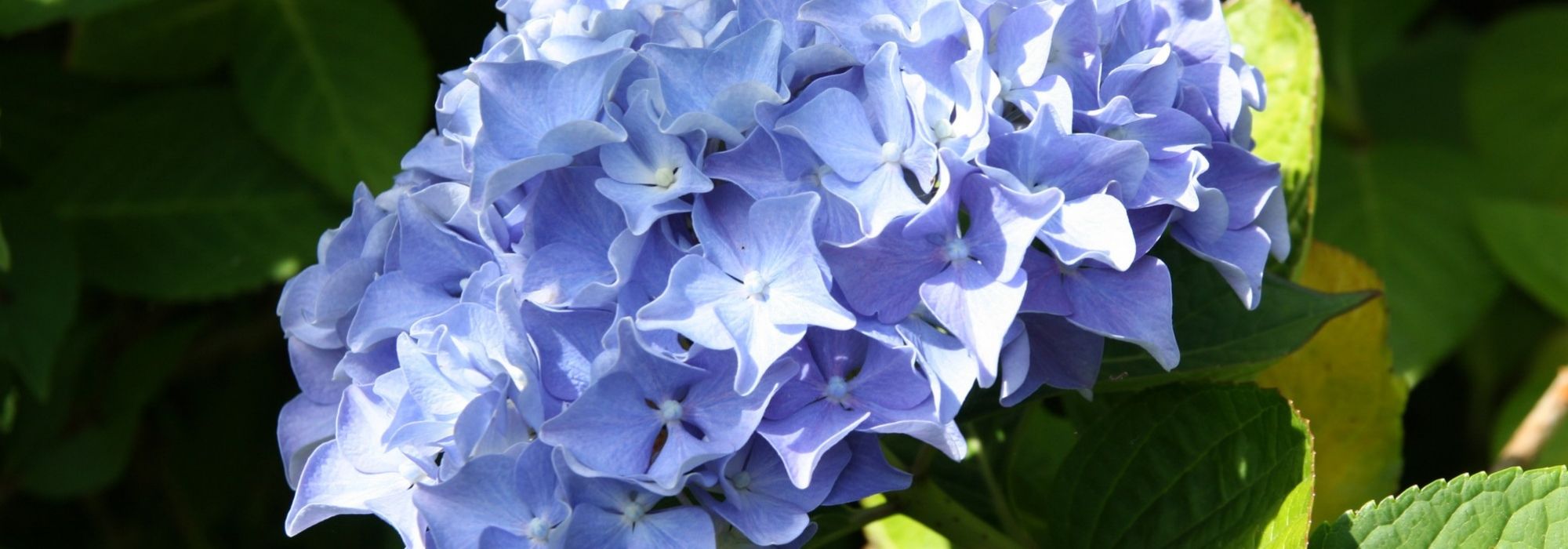
Colour of hydrangeas
a changing nature
Contents
The flowers of hydrangeas macrophylla and serrata have the unique ability to change colour depending on several factors. Indeed, depending on the varieties, the flowers can be blue, white, pink, red or even purple, but their shade can vary significantly from one location to another.
Discover why hydrangeas change colour and also how to obtain a blue hydrangea, in a pot or in the ground…
Why do macrophylla and serrata hydrangeas change colour?
Hydrangeas macrophylla and serrata have, in their flower, a plant dye (or pigment): delphinidin. In neutral soil, this pigment is pink. Whereas in acidic soil, it turns blue but only in the presence of certain components.
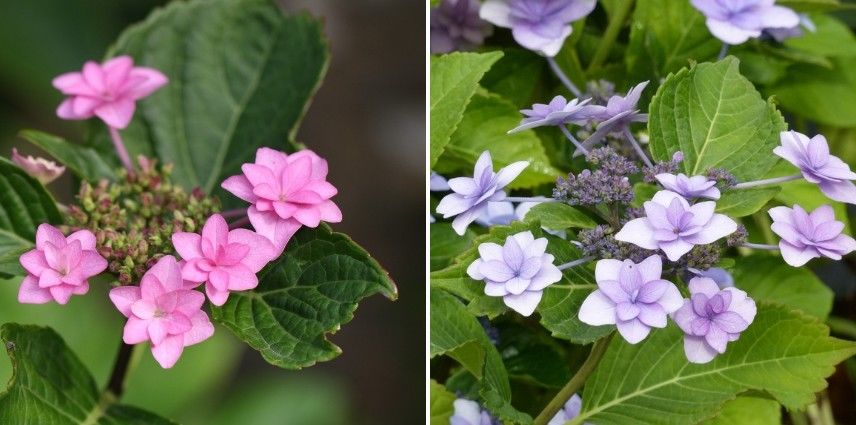
Hydrangea macrophylla ‘Etoile Violette’ in neutral soil / in acidic soil
Why is a hydrangea blue?
In acidic soil (pH 4-5), delphinidin combines with aluminium or iron salts, naturally present in certain materials like slate in an assimilable form, and turns blue. The intensity of the blue depends on the level of acidity: the more acidic the soil, the more intense the blue will be. Similarly, a pale pink hydrangea in neutral soil will be pale blue in acidic soil, a deep pink hydrangea in neutral soil will be deep blue in acidic soil, or even a rather red hydrangea in neutral soil will be purple in acidic soil.
Why is a hydrangea white?
The flowers of white hydrangeas lack pigment. This is why they remain white, although they may sometimes take on a hint of pink or blue as they fade.
Why is a hydrangea pink?
In neutral or slightly alkaline soil (pH 6-7), delphinidin cannot combine with aluminium or iron salts which remain insoluble, so the flowers remain pink.
Read also
Planting hydrangeasHow to get blue hydrangeas?
In the market and on our site, you can find “Blueing for Hydrangeas”. These products help to intensify the colour of blue hydrangeas or provide the necessary minerals for blueing that are absent from an acidic soil. They come in powder form to dilute or as liquids. They are based on aluminium sulfate, iron sulfate, alum, slate…
It is important to know that an acidic soil lacking aluminium or iron salts is not enough to make them blue. Conversely, adding a lot of blueing products to a neutral pH soil is also not sufficient to make them blue. In conclusion, both are needed: aluminium (or iron) AND an acidic soil to make hydrangeas blue.
We explain more in our article: How to achieve a blue hydrangea in the garden?
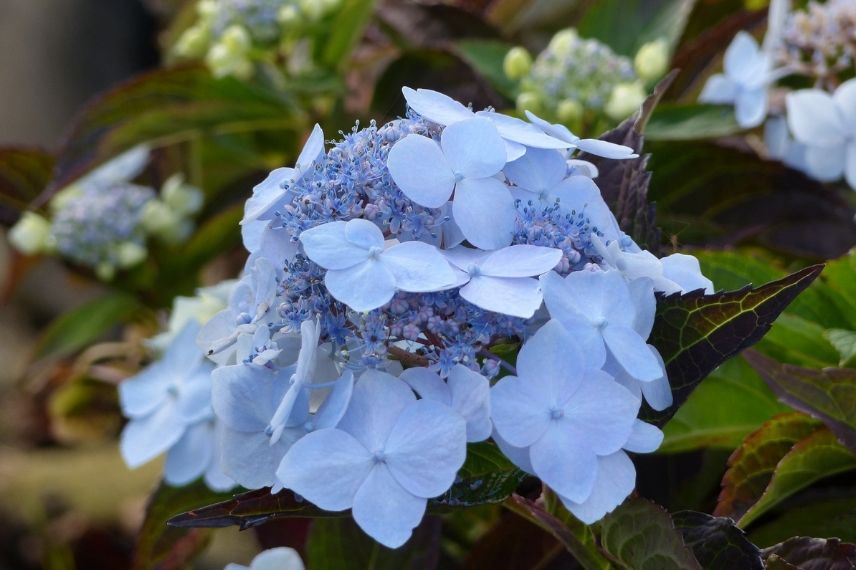
Hydrangea serrata ‘Blue Deckle’ in acidic soil
Obtaining blue hydrangeas is easier in pots rather than in the ground, as you can choose the right substrate.
How to have a blue hydrangea in a pot?
To grow a blue hydrangea in a pot, you need to:
- Choose a pot that is 50 cm deep.
- Place a drainage layer (clay balls, gravel, pumice…) at the bottom of the pot.
- Make a mixture: 1/3 heather soil (or peat soil or leaf compost), 1/3 non-calcareous garden soil, and 1/3 compost (or 2/3 compost if you do not have a garden).
- Put a layer of the mixture on top of the drainage layer.
- Place the root ball of your hydrangea and fill the gap around the plant with your mixture.
- Firm down with the palm of your hand.
- Water with rainwater to which you have added a dose of blueing product following the instructions on the label.
Afterwards, maintenance consists of repotting your hydrangea every two years at the beginning of spring and applying blueing product twice a year, once in spring and once in autumn. Don’t forget to fertilise from time to time and monitor watering, especially during dry periods (allow the substrate to dry out between waterings).
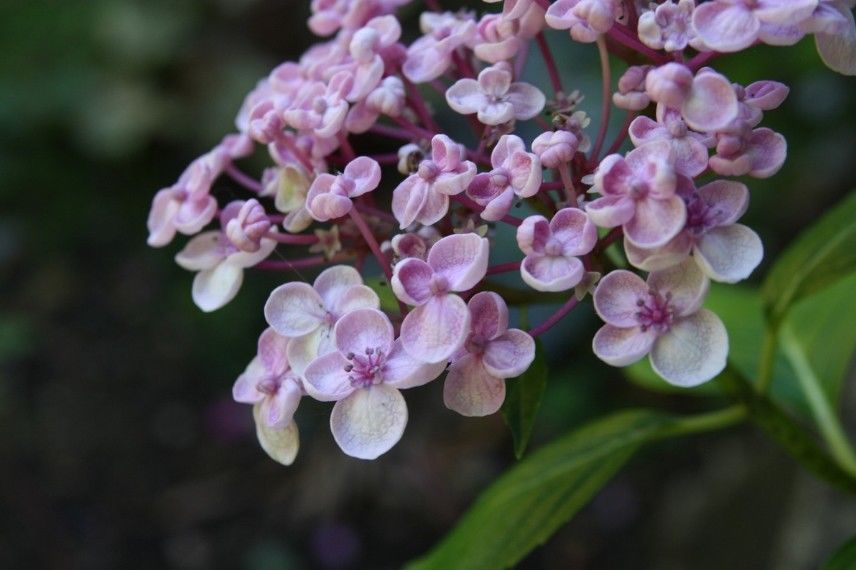
Hydrangea macrophylla ‘Ayesha’ in neutral soil
Discover other Hydrangeas
View all →Available in 1 sizes
Available in 1 sizes
Available in 1 sizes
Available in 1 sizes
Available in 1 sizes
Available in 2 sizes
Available in 2 sizes
Available in 2 sizes
Available in 1 sizes
Available in 2 sizes
Some examples of hydrangeas
Here is a table summarising some examples of ‘hydrangeas changing colour according to pH and the presence of aluminium or iron salts’:
| Varieties | Colours in all soils without aluminium sulphate | Colours in acidic soil + aluminium sulphate |
| Etoile Violette | lilac pink | light blue |
| Ayesha | light lilac pink | soft lavender blue |
| Merveille Sanguine | burgundy red | violet |
| Blaumeise (Teller Blue) | lilac pink | intense blue sterile flowers and azure blue fertile flowers (centre) |
| Zorro | fresh pink | blue violet |
| Lady Fujiyo | mauve pink edged with white | blue edged with white |
| Beauté Vendômoise | mauve sterile flowers and pale pink fertile flowers (centre) | bright blue sterile flowers and bluish white fertile flowers |
The case of other hydrangeas
Concerning Hydrangeas paniculata and quercifolia, it is primarily the alternation of cool nights and warm days that will cause them to change colour. The greater the temperature range, the more vibrant their colours will be.
The inflorescences therefore gradually transition from white to varying shades of pink as the season progresses.
Question / Answer
Can you make a hydrangea turn blue with crushed slate or rusty nails?
Yes and no. It can work if your soil is acidic! Place them at the base of your hydrangea, and the rainwater will carry the minerals down to the roots. However, the result is not guaranteed; you still need a good amount of aluminium or iron for the colour change to occur and last. The best solution remains a bluing product.
- Subscribe!
- Contents
































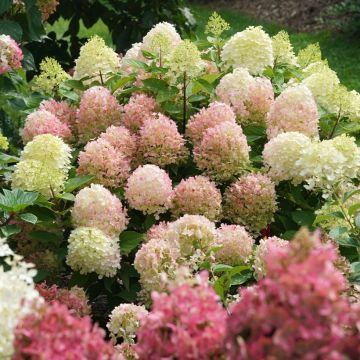
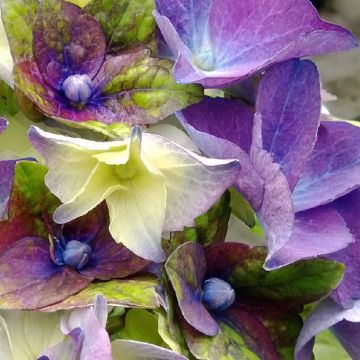
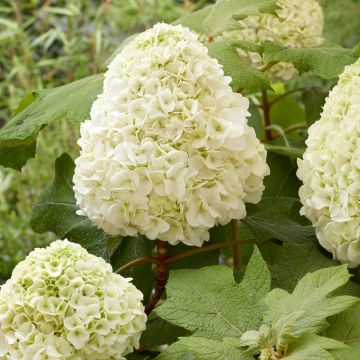
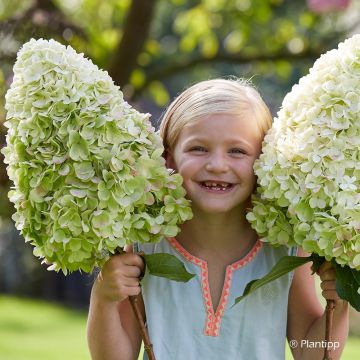
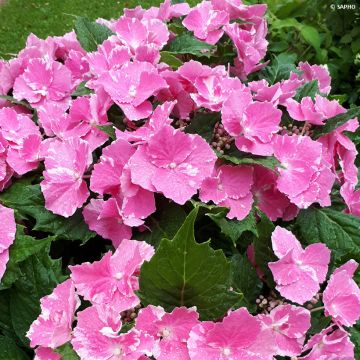
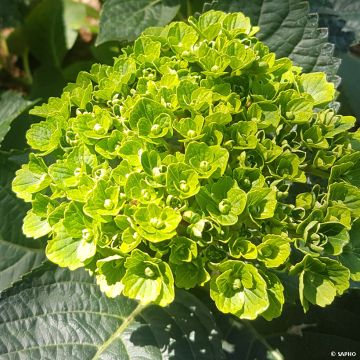
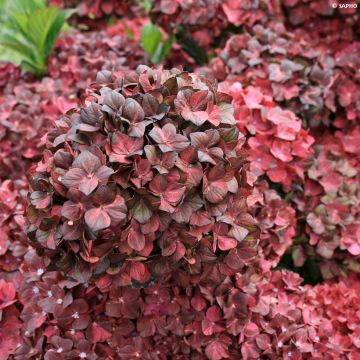
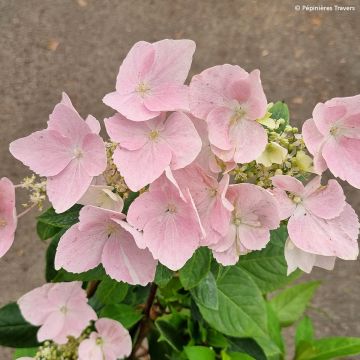

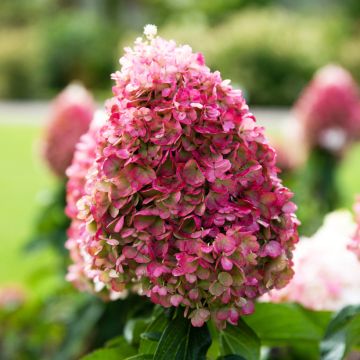
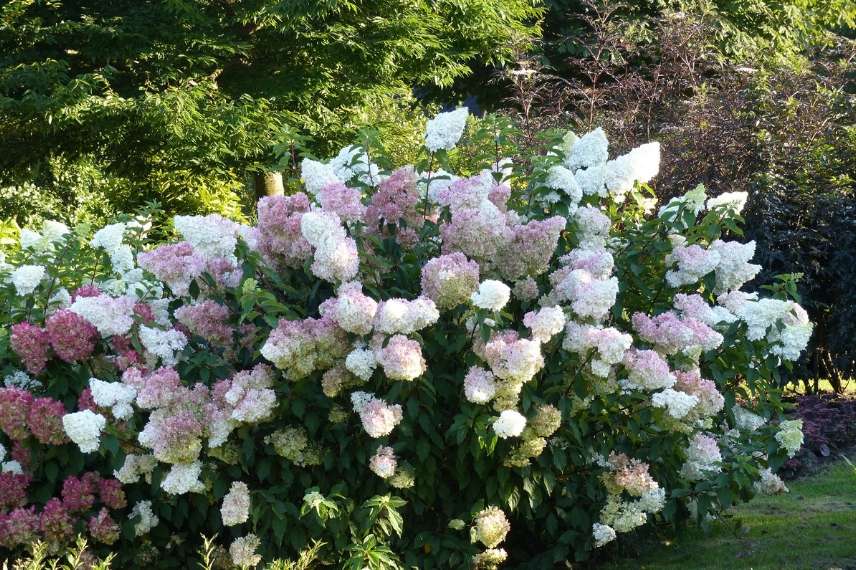
Comments